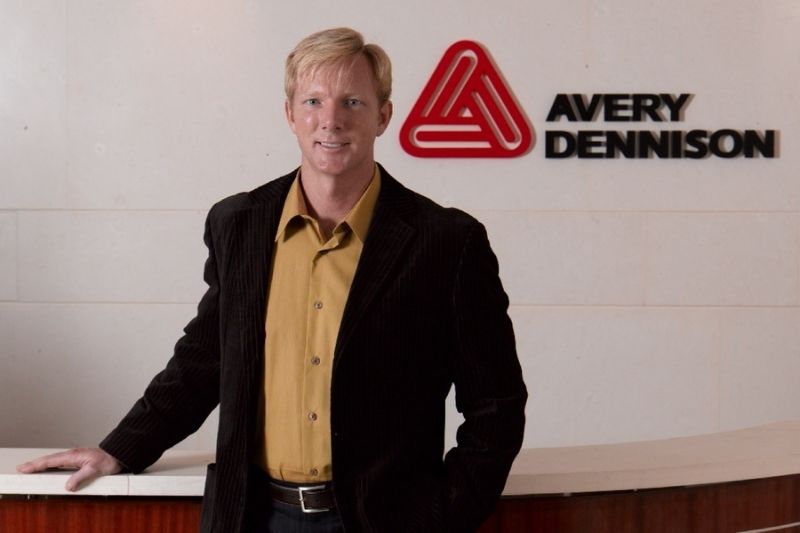Steve Jobs once said, “Innovation distinguishes between a leader and a follower.” Read on to learn more about the world of intrapreneurship, and how intrapreneurial innovation can drastically boost both your company’s short-term and long-term prospects.
The concept of entrepreneurship is not new to anybody who has spent time working in business. Many of the world’s most famous businesses today were founded and run by entrepreneurs who pursued a vision and dream. Intrapreneurship, on the other hand, is far more under-the-surface. While some companies may indeed utilise some form of intrapreneurship, rarely do they attribute the practice to the term itself. We sat down with Intrapreneur, Martin Daffner, founder and CEO of global innovation powerhouse, Innobrix to learn more about the concept of intrapreneurship, why companies should adopt this tool and his thoughts on future trends in intrapreneurship.
With over a decade of experience in creating intrapreneurship programmes for some of the biggest companies in the world, including Intel, Honeywell, and Cisco, Martin is one of the most recognised names in the intrapreneurship game today. After graduating from the University of Southern California with an MBA in 2012, Martin established Innobrix, helping to create and implement intrapreneurial practices within large corporations. He also currently leads Fung Group’s Strategy and Business Practices division.

Intrapreneurship: What is it?
Gifford Pinchot III, an American entrepreneur credited with naming the concept of intrapreneurship in a 1978 paper titled “Intra-Corporate Entrepreneurship”, defined intrapreneurs as “dreamers who ‘do’. Those who take responsibility for creating innovation of any kind within an organisation.”
Martin describes American aerospace company, Lockheed Martin, as one of the first, most classic examples of intrapreneurship. During World War II, a company employee named Kelly Johnson came up with the idea for “Skunk Works”, a separate branch of Lockheed Martin that would be solely dedicated to radical innovation; designing highly advanced fighter jets to help compete with the growing threat of the German Air Force.
Skunk Works was eventually responsible for creating some of the world’s most avant-garde fighter aircraft models at the time, such as the P-38 Lightning in 1939 and the P-80 Shooting Star in 1943. All of this stemmed from Lockheed Martin providing Johnson with the proper support and resources he needed to succeed, while also giving him a large amount of freedom to run with the novel ideas that he conceived. Originally launched in 1943, Skunk Works is still in operation today as the advanced design and development division of Lockheed Martin, a testament to the longevity of intrapreneurial programmes.
Intrapreneurship in Action
Martin cites the example of the ‘Ideas2Reality’ programme at Intel China as one of his most successful intrapreneurship ventures. The programme was focused on working with strong technical talent at Intel China – computer science and electrical engineers who did not have a lot of business acumen but had many ideas on how they could develop technologies to help society.
Martin recalled the story of an intrapreneur at the programme whose grandfather had passed away after a battle with dementia. During his final years, medication would help, but because of dementia, he was forgetting to take his medication and the illness was inhibiting his ability to treat his own illness. The intrapreneur in question came up with an idea for a pillbox with a sensor that would call a specific number if the patient did not take his medicine on schedule. “I use this anecdote because it’s so tangible. These are smart, hardworking, dedicated technical people who see value; they can create value but they don’t understand how to turn that into a business. We help them with that,” he concludes.
The Ideas2Reality programme – branded as a “mini MBA” for technical people – was wildly successful. One cohort of around five or six teams was put through the programme every six months, and by the time the third cohort began training, the business impact of the first two batches had paid for themselves and the programme for the next five years. “We never had a conversation again about budgeting!” Martin recalls.
A key factor in the success of the programme was the hiring of a marketing expert, and Martin remembers being bemused by the decision, undertaken by programme director Kapil Kane. “I thought he was crazy – we’ve got all this project management stuff to do, and it’s just me and him,” he recalls. However, the hiring of Rebecca – the marketing expert – turned out to be one of the best decisions Kane could have made. The most important thing she accomplished was helping Intel leaders understand a crucial intrapreneurial advantage: that their engineers now understood their business and Intel’s customers, as well as how to come up with ideas to deliver what their customers were looking for. “I would strongly urge anybody else trying to promote intrapreneurship inside a corporate to do the same,” Martin remarks.
The final outcome of any intrapreneurship programme should be at least one winner that receives the initially promised funding and eventually makes it onto the market, but Martin believes a good programme should find alternative homes for at least three other ideas. “If that happens, then you get a pretty good return and more people and businesses will want to join,” he adds.

Pitching Intrapreneurship
According to Martin, there are two types of CEOs. Vision-setting CEOs who prefer looking at the big picture, and hands-on CEOs who handle more of the day-to-day operations of their business. When it comes to convincing CEOs of the benefits of intrapreneurship, these two types of leaders require fairly different pitch approaches. “If you’re a very forward-thinking, vision-setting CEO, I would pitch you around the long-term viability of your firm – that in order to create a more adaptable culture and therefore business, intrapreneurship plays a vital role,” says Martin. CEOs who look towards the future need to understand that establishing a culture of intrapreneurship is a great way to ensure the long-term survival of the company.
“If you’re a more tactical CEO, then I would pitch you the short-term benefits of intrapreneurship, and the main benefit is: you make a little, you sell a little, you learn a lot,” Martin asserts. Intrapreneurship presents way more short-term benefits than one might initially realise. Instead of betting on something being the next big thing, spending a huge amount of money on it, and only knowing years from now whether it was a good bet or not, intrapreneurship only requires a small amount of funding to get started, which makes it a much safer investment.
Martin concedes that many managers simply don’t see the need to work on new, innovative ideas, because there’s already so much on their plate with regards to day-to-day tasks and responsibilities. “Managers don’t get paid to manage the future, they get paid to manage today,” he acknowledges.
A solution to this, however, is to create what Martin calls a “coalition of the willing”. This coalition should ideally involve senior members of the company who support the implementation of the intrapreneurship programme, as they can help convince others that it’s something worth investing in. “If you can’t find at least two or three director-level folks who are passionate about it and want to do it, be very careful because then I think the probability of a successful programme becomes less than 30%,” he warns.

Who Makes A Good Intrapreneur?
To find the employees with the most potential for intrapreneurship in a company, Martin advises companies to be as transparent about the process as possible. The process should be marketed as exclusive to foster competitiveness and should be reinforced by selecting the five to six teams who present the best project proposals, out of an initial 20 or so.
Properly advertising the potential benefits of the programme to employees – the business acumen and tools that they’ll pick up, the support they’ll have from experienced business leaders, the opportunity to present their ideas to senior leadership, and potentially being able to put their products on the market – should be enough to, in Martin’s words, “get people to play”. But most importantly, the programme should be voluntary, as “the people who want to come are the people you want to work with,” he reiterates.
A common intrapreneurial failure mode is the “valley of despair” – a path of frustration and uncertainty that every team has to tread through. “Everyone’s really excited at the beginning, but when we really start to unpack the problem we’re trying to solve, people often underestimate how hard it is, and forget about how excited they were to solve all these problems in the first place,” he describes. Knowing how to manage the team through that valley of despair is crucial, Martin declares, as the team needs to have enough perseverance to gut it out.
Looking Ahead
Martin sees the ever-evolving digitalisation of business as one of the most important trends in intrapreneurship. Nowadays, the speed with which information can be acquired is making an intrapreneur’s job much easier, allowing intrapreneurs to virtually interact with focus groups and receive near-instantaneous feedback on a potential product – in stark contrast to the sluggish methods of old. “Back in the day, if you wanted to understand how consumers felt about a product, you’d have to stand outside of a supermarket or train station, and ask people directly,” Martin recalls.
Intrapreneurship, in Martin’s own words, is all about “searching for a viable business and operating model”. With the increased rate in which information can be acquired, intrapreneurs can now learn much faster than before, at a cost that is much lower than what intrapreneurs of the past had to pay – a radical change in the nature of intrapreneurship. “The future of intrapreneurship is running 16 experiments a day. That used to be an annual experiment target. Now that’s a daily experimental target, and it’s doable,” he emphasises.
Above all, however, the greatest reward for Martin comes from being able to start new businesses and solve market needs. “When you grow a new business somewhere or solve a business challenge for a business and their customers, that’s a win-win. That’s when I feel good about what I do for a living,” Martin concludes.
Related Articles
7 Lessons Professional Sports Teams Can Teach Entrepreneurs





